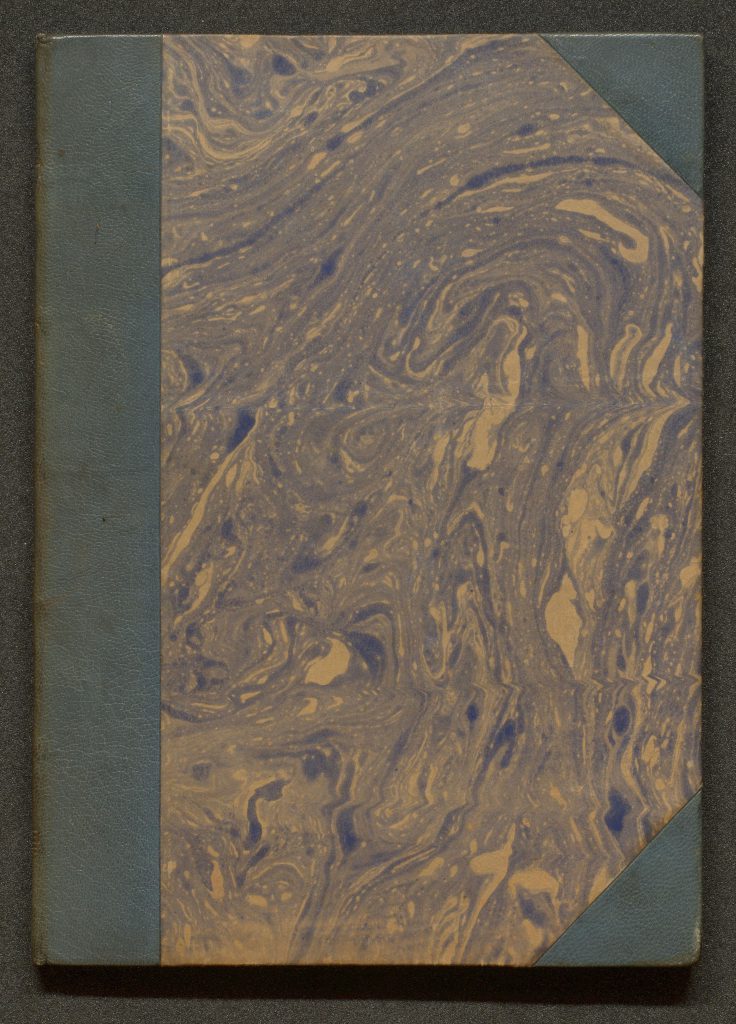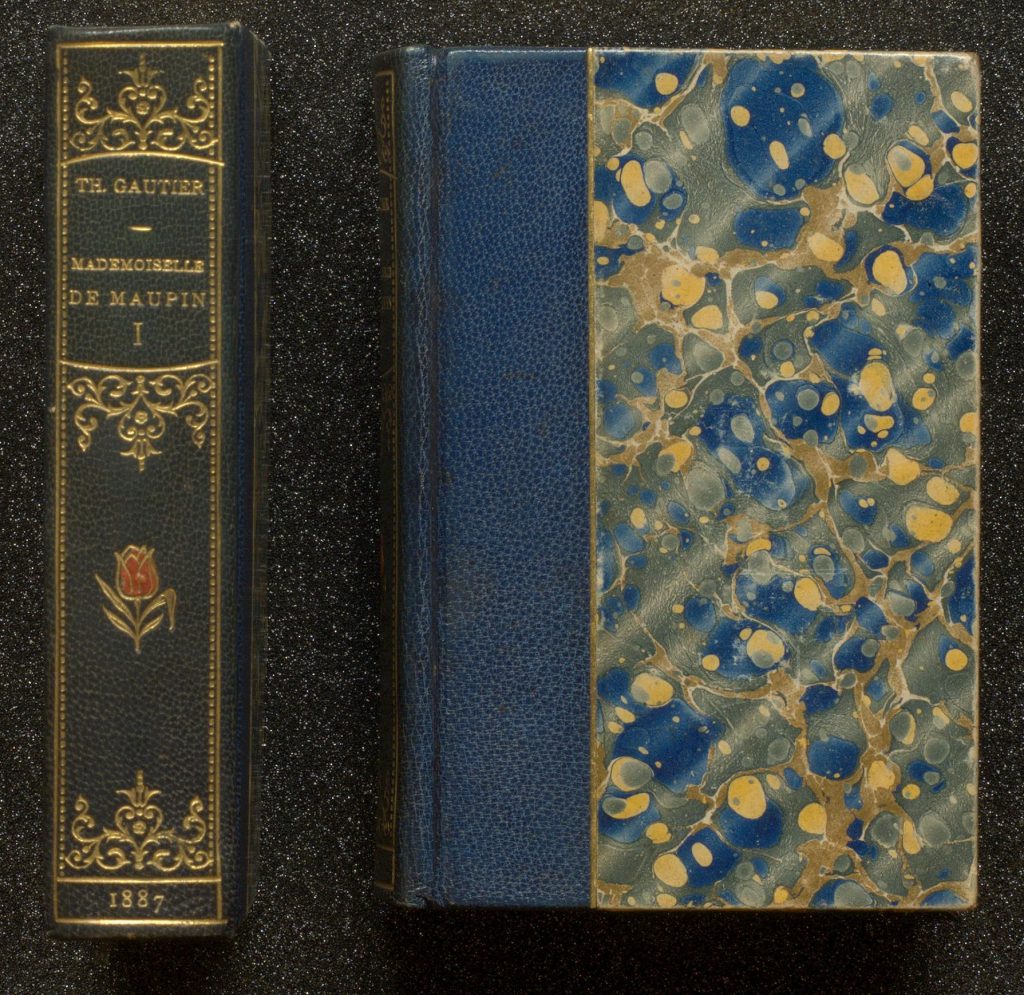A binding which covers only the spine and the edge of the boards nearest the spine is described as ‘quarter binding.’ The amount of the board covered varies, but the binding may indeed cover one quarter, hence its name.
Quarter bindings, which use less material – leather, parchment, cloth, paper, depending on date and style – are cheaper than half bindings which cover the spine and back edge of the boards plus the outer corners of the boards. Half and quarter bindings may be described as quarter calf, half parchment, etc, naming the binding material used on the spine. Full calf, for example, describes a binding in which the full extent of the spine and boards is covered in the same material.

SPEC Blease 109: Quarter binding from the Rodale Press, 1954 
SPEC Blease 113: Half binding from London Central School of Arts and Crafts, 1946
Common styles of binding can help to identify where and when an item was bound, or may be a recognisable ‘uniform’ such as the ‘Roxburghe style’ used for the publications of the Roxburghe Club. Their quarter bindings have a spine of brown or black leather, with the title tooled in gold, and the sides are dark-red paper-board. More recently, morocco and buckram have been used in the same colour scheme.

From the 17th century onwards, and notably in the 18th and 19th centuries, as it became usual to shelve books with the spines outward, the spines of quarter- or half-bound books lent themselves to decorative display.
